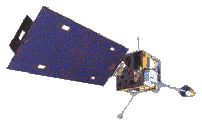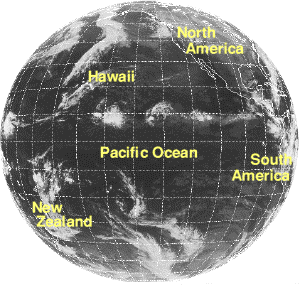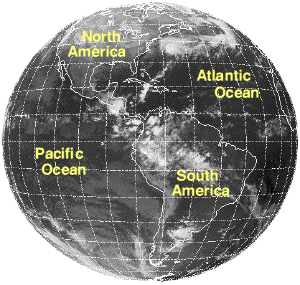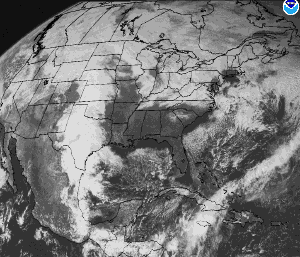Geostationary satellite images - 2:
Geostationary Operational Environmental Satellites - GOES


The Americas - GOES East and GOES West
From their orbital position, the 2 satellites cover nearly half the surface area of the globe - from New Zealand in the far west, across the Pacific Ocean, North and South America and the Atlantic Ocean to the western coast of Africa.
The GOES satellites are unable to 'see' Europe, Africa, the Indian Ocean, India and Asia.


Once weather systems move away from the Western Atlantic and Caribbean regions they are detected by Meteosat, the European satellite orbiting at 0°, providing a continuous observation from formation to decay.
GOES W observes the Pacific Ocean, providing valuable data on systems moving towards the Western USA and South America - and also in a ideal position to observe the changes brought about by El Niño and La Niña.



